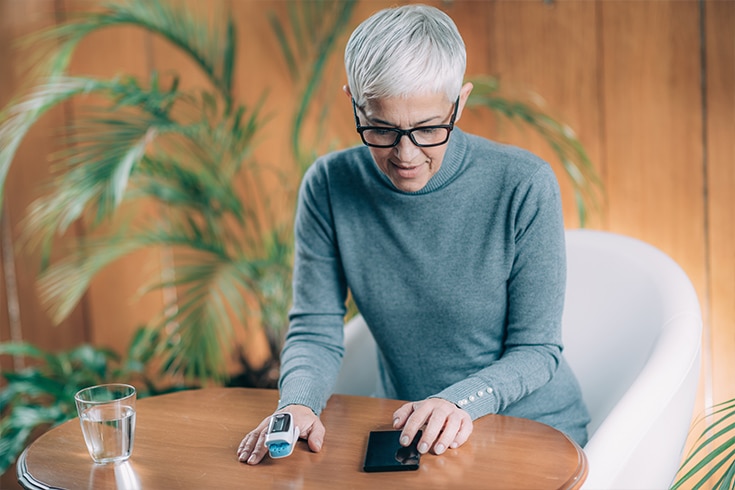The quality and eligibility of remote patient monitoring (RPM) devices is crucial when choosing the best RPM program for your practice. As medical equipment, at-home devices must meet certain standards to qualify. To determine which pieces of equipment are eligible for remote monitoring billing, there are a few factors to consider.
The Center for Medicare and Medicaid Services (CMS) recently updated the rules and regulations surrounding remote monitoring devices and their eligibility. Beyond the quality and performance of remote equipment for the health and wellbeing of patients, the ability to bill for and gain reimbursement from devices is essential for providing patients with continuous and consistent remote services.
Your ideal RPM solution should provide eligible, integrated cellular, and ready to use devices for your patient population.
Remote patient monitoring device qualifications
RPM devices must meet the FDA definition of a medical device. This does not necessarily mean that the device must be registered with or cleared by the FDA, but rather that it may be subject to review from the FDA as the CMS Current Procedural Terminology (CPT) Codebook does not specify the need for FDA registration or clearance. The device, however, must automatically upload patient measurements and data. This is to say that patients are not permitted to self report or self record data via RPM devices. Any service provided to a Medicare beneficiary must be reasonable and necessary for diagnosis and treatment of the patient’s condition and must contribute to the improvement of said condition. Therefore, RPM services and devices provided to Medicare beneficiaries must be essential in the planning or executing of treatment or management of the patient’s condition(s).
There are a variety of eligible devices offered by RPM companies which include the following:
- Blood Pressure Cuff
- Blood Glucose Monitor
- Digital Weight Scale
- Pulse Oximeter
Remote patient monitoring device billing
There are two CPT codes that are commonly used when billing for device services in particular. These codes help practitioners get reimbursed for the time and effort involved in device set up and monitoring.
- CPT Code 99453: Enables practitioners to bill for remote monitoring services of biometrics and bill for the initial device set-up service as well as patient equipment education. This code can only be billed after 16 days of continuous monitoring.
- CPT Code 99454: Allows practices to get reimbursed for supply devices to patients. This code can be billed every 30 days.
The CMS has clarified their rules regarding these billing codes in saying that, “only one practitioner can bill CPT codes 99453 and 99454 during a 30-day period and only when at least 16 days of data have been collected on at least one medical device as defined in section 201(h) of the FFDCA.” Though they later amended this statement to clarify that auxiliary personnel, including contracted employees, may also provide the services described within the CPT codes above with the understanding that they are under practitioner supervision. The CMS also mentioned that when more specific codes apply to a particular service provided, they recommend using the more specific billing codes. The overarching clarification made by the CMS stipulates that all remote monitoring services be reasonable and necessary with regards to a patient’s condition and treatment plan.
Billing for multiple eligible remote patient monitoring devices
The CMS has stated that providers may only bill once for CPT Codes 99453 and 99454 under the 30-day period, regardless of the number of devices a patient uses. This presents a problem for practitioners who need to gather data on a singular patient through multiple devices, such as using a blood pressure cuff and blood glucose monitor in tandem with one another.
One patient suffering from multiple conditions that all require remote monitoring via different remote devices would only be able to get reimbursement for one of the devices, or bill the above codes once per billing cycle. It is possible that in future clarifications, the CMS amends these restrictions so that patients and practitioners may bill once per condition or be able to bill for additional codes that can be billed separately for monitoring co-existing conditions.



